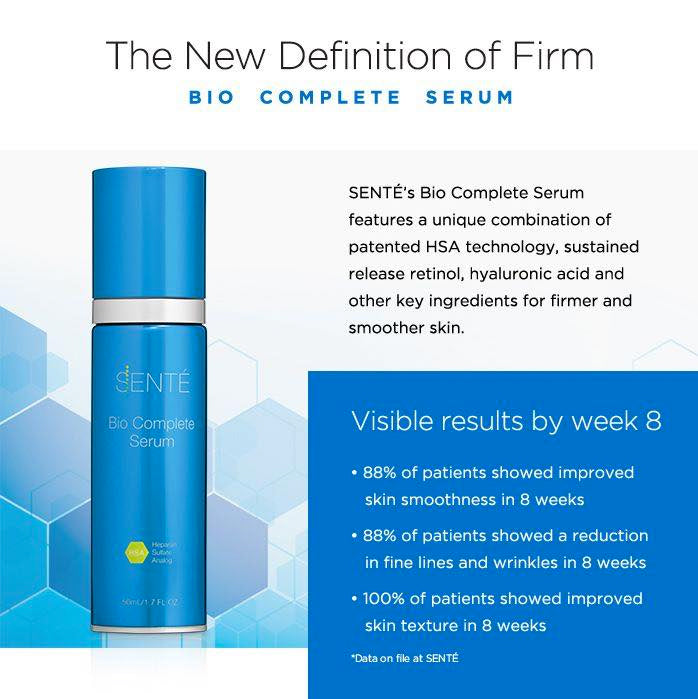
Sente retinol skin#
You should eventually be able to work up to every other day for sensitive skin or every day for normal skin.

Once your skin has acclimated, you can dial up the frequency, but do so gradually, again giving your skin a week or so to adjust. “I always recommend starting twice weekly to reduce the risk of irritation and redness,” she explains. Henry cautions against everyday use, at least when you are first starting out. In order to get the best results, you have to use your retinol products consistently, but Dr. If you are new to retinol and your skin is prone to sensitivity, start out with the lowest percentage and increase the strength as your skin adjusts to it. “Over-the-counter retinols come in concentrations of 0.25 percent, 0.30 percent, 0.5 percent, and 1 percent,” says Dr. The concentration refers to the strength of the formulation. Both derms advise that you start low and slow-use a lower concentration of retinol at the start and space out the days you use it until your skin gets accustomed to it, then increase the strength and frequency. But forcibly removing that layer can leave some skin feeling sensitized and using retinol too often or starting off at too high a concentration can result in redness and dryness. Just like a powerful acid or scrub, retinol helps in the removal of dead surface skin cells, revealing fresher, healthier skin below. Sometimes retinol can be a little too effective (or someone can use it a bit too enthusiastically), leading to irritation and redness. When deciding between those formulations, she says, it’s important to be aware of your skin and how it reacts to a powerful ingredient like retinol. Kikam notes that serums are great for those with oily skin types because they tend to be non-greasy, while cream formulations can make retinol more tolerable for drier skin types.

Of course, your skin type can also have an effect on what type of retinol product you choose-Dr. Adeline Kikam, dermatologist & founder of Brown Skin Derm, a platform dedicated to inclusive skincare information, explains, “Serums contain higher concentrations of active ingredients and, because they are light or thinner liquids, tend to absorb very well into skin.” So while creams and lotions are still effective, serums penetrate the skin barrier more easily and therefore have a more dramatic impact. But, if you’re looking to get the most skin transformation for your money, you can’t beat a retinol serum.

With that kind of a track record, it’s no surprise that products featuring retinol have become so popular-formulators have found new and innovative ways to work it into different iterations, ranging from moisturizers to masks to eye creams. “This provides its efficacy in treating acne, fine lines and wrinkles, hyperpigmentation, and textural issues,” says Dr. Once converted, she notes, “it then binds with the retinoid receptors in the skin’s DNA, affecting the transcription of various genes that regulate cellular proliferation and differentiation.” Translation: It helps your skin cells work at peak levels, accelerating collagen and elastin production to make your skin look and act younger.

Michelle Henry, it’s a biologically inactive compound that, when metabolized by the body, is converted into a drug-in this case, retinoic acid. Retinol is what is known as a prodrug, explains board-certified dermatologist Dr. The thing that makes retinol so unique is that it works on the surface of the skin to exfoliate and regulate cell turnover and with your skin’s actual DNA. A derivative of vitamin A, retinol is an ingredient you’ve most likely heard of, but it’s become so ubiquitous in the world of skincare that you may not actually be able to pinpoint exactly why you’re supposed to be using one. Water (Aqua), Butylene Glycol, Dipropylene Glycol, Cyclopentasiloxane, PEG-12 Dimethicone Crosspolymer, Dimethicone Crosspolymer, Dimethicone/Vinyl Dimethicone Crosspolymer, Dimethiconol, Dimethicone, Laureth-23, Laureth-4, Glycerin, Heparan Sulfate, Pentylene Glycol, Retinyl Safflowerate, Retinol, Lysophosphatidic Acid, Myristoyl Nonapeptide-3, Myristoyl Pentapeptide-17, Ethyl Safflowerate, Ethyl Flaxseedate, Dipalmitoyl Hydroxyproline, Allantoin, Panthenol, Hyaluronic Acid, Sodium Ascorbyl Phosphate, Alanine, Arginine HCl, Asparagine, Aspartic Acid, Cystine, Glutamic Acid, Glutamine, Histidine HCl, Isoleucine, Leucine, Lysine HCl, Acetyl Methionine, Phenylalanine, Proline, Serine, Threonine, Tryptophan, Tyrosine, Valine, Calcium Pantothenate, Folic Acid, Inositol, Niacinamide, Pyridoxal HCl, Riboflavin, Thiamine HCl, Calcium Chloride, Magnesium Sulfate, Potassium Chloride, Sodium Chloride, Sodium Phosphate, Beta-Carotene, Polysorbate 80, Polyaminopropyl Biguanide, Fragrance, Tromethamine.ĭo not use if you are pregnant, lactating or planning to become pregnant.Ask any skin expert what the most integral ingredient is for a smooth, radiant, youthful complexion and the answer will invariably be retinol.


 0 kommentar(er)
0 kommentar(er)
